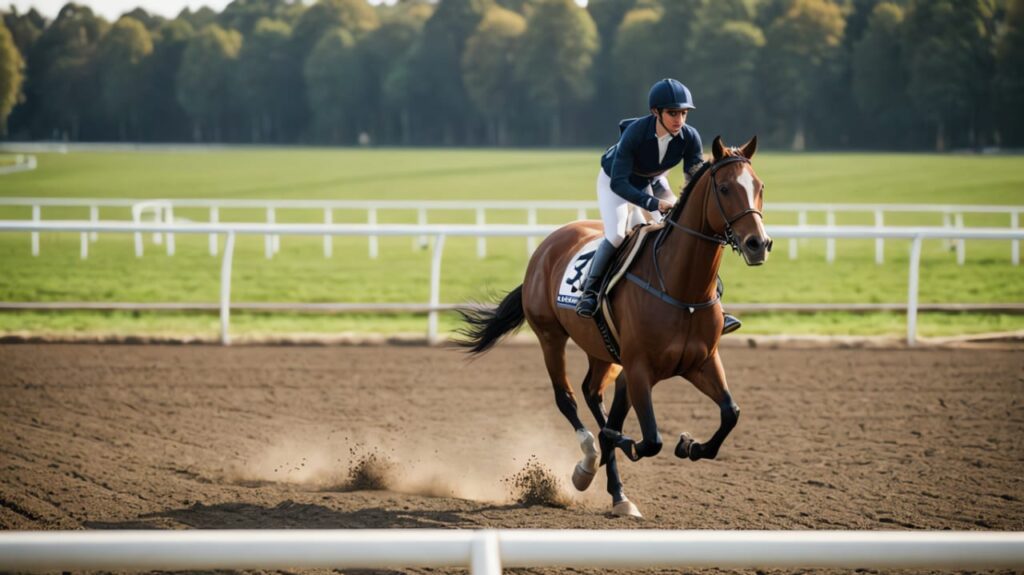Polytrack has emerged as a leading choice for synthetic racetrack surfaces, offering a reliable and durable alternative to traditional turf and dirt tracks. Its design promises consistent performance and enhanced safety for horses, making it a popular option among racetrack owners. However, understanding the installation process and associated costs is crucial for effective planning. This article provides a detailed guide on what to expect when installing Polytrack at your racetrack, including the installation steps, cost factors, benefits, and frequently asked questions.
What is Polytrack?
Polytrack is a synthetic racing surface created from a blend of materials such as rubber, fibers, and wax-coated granules. It is engineered to mimic the qualities of natural turf while providing superior durability and consistency. Polytrack offers several advantages over traditional surfaces, including reduced maintenance requirements and improved safety for horses.
The Installation Process
Installing Polytrack involves a series of steps to ensure the surface is laid correctly and performs optimally. Here’s a comprehensive look at what the installation process entails:
1. Site Preparation
a. Evaluation and Planning
- Site Assessment: Begin with a thorough evaluation of the existing track and its surroundings. This includes checking the current surface condition, drainage systems, and any structural issues.
- Design and Planning: Collaborate with experts to design the new track layout and plan the installation process. This stage includes determining the depth of the Polytrack layers and planning for necessary base improvements.
b. Base Construction
- Removal of Existing Surface: If replacing an old surface, the first step is to remove it completely. This involves clearing the area of the existing material and preparing the base for the new installation.
- Base Layer Construction: Construct a stable base layer using crushed stone or gravel. Proper compaction and leveling are critical to create a solid foundation for the Polytrack surface.
2. Installation of Polytrack
a. Material Preparation
- Mixing: Polytrack material is prepared by mixing synthetic fibers, rubber granules, and wax. The mixture must be blended to the specified proportions to ensure optimal performance and durability.
b. Application
- Layering: Apply the Polytrack mixture in layers over the prepared base. Each layer is spread evenly and compacted to achieve a uniform surface. The process may involve several layers to reach the desired depth and consistency.
- Final Surface: Allow the Polytrack to settle and cure. This curing period can take several days, during which the surface stabilizes and reaches its full performance potential.
c. Testing and Quality Control
- Surface Testing: Conduct tests to ensure the surface meets performance standards. This includes checking for consistency, cushioning, and drainage capabilities.
- Final Inspection: Perform a comprehensive inspection to confirm that the installation adheres to all specifications and quality requirements.
Cost Considerations
The cost of installing Polytrack can vary widely based on several factors. Here’s a breakdown of the key cost considerations:
1. Size of the Track
- Track Dimensions: The length and width of the track significantly impact the overall cost. Larger tracks require more material and labor, increasing expenses.
2. Site Conditions
- Base Preparation: Costs can rise if extensive work is needed to prepare the existing base. Issues such as poor drainage or structural problems may necessitate additional work.
- Infrastructure: Costs for improving drainage systems or other infrastructure components should be included in the budget.
3. Material Costs
- Polytrack Material: The cost of Polytrack itself can vary depending on the supplier and the specific mix used. Prices may also fluctuate based on market conditions.
- Additional Materials: Budget for other materials required for the base construction and installation process.
4. Labor and Installation
- Expertise Required: Hiring experienced professionals for the installation can impact costs. While this may be more expensive, it ensures high-quality installation and long-term performance.
- Installation Time: The duration of the installation process affects labor costs. Delays or complications can also increase overall expenses.
5. Ongoing Maintenance
- Routine Maintenance: Regular maintenance is essential to keep the Polytrack in optimal condition. This includes inspections, minor repairs, and occasional resurfacing.
Benefits of Polytrack
Polytrack offers several advantages that make it a desirable option for racetrack surfaces:
1. Consistency
- Stable Performance: Polytrack provides a consistent racing surface that remains reliable under various weather conditions. This consistency ensures a fair and predictable racing experience.
2. Safety
- Reduced Injury Risk: The cushioning effect of Polytrack helps minimize the risk of injuries to horses, contributing to a safer racing environment.
3. Durability
- Long-Lasting: Polytrack is designed to withstand heavy use and environmental conditions, reducing the need for frequent repairs or replacements.
4. Low Maintenance
- Ease of Care: Compared to natural surfaces, Polytrack requires less maintenance. This can lead to cost savings over time and less downtime for track repairs.
Conclusion
Installing Polytrack at your racetrack offers numerous benefits, including a consistent and safe racing surface that performs well in various weather conditions. Understanding the installation process and associated costs is crucial for effective planning and budgeting. By preparing the site properly, selecting high-quality materials, and working with experienced professionals, you can ensure a successful installation that enhances your racetrack’s performance and longevity.
FAQs
What is the average cost of installing Polytrack?
The cost of installing Polytrack varies widely based on factors such as track size, site conditions, and material costs. On average, the installation can range from $500,000 to $1.5 million.
How long does the Polytrack installation process take?
The installation process typically takes several weeks, depending on the size of the track and site conditions. This includes site preparation, material application, and curing time.
What type of maintenance does Polytrack require?
Poly track requires regular maintenance, including inspections, minor repairs, and occasional resurfacing to ensure optimal performance and longevity.







